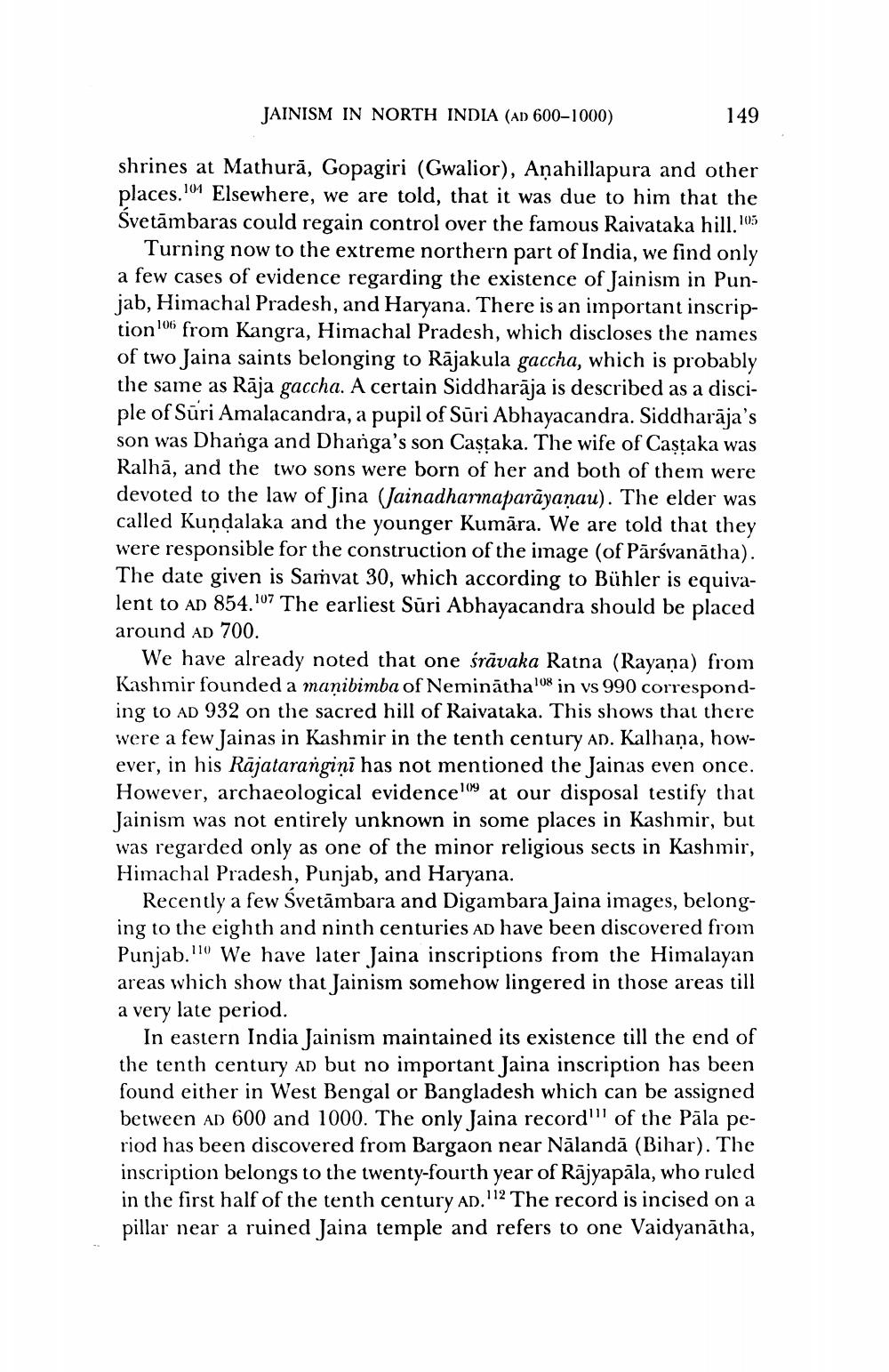________________
JAINISM IN NORTH INDIA (AD 600-1000)
149
shrines at Mathurā, Gopagiri (Gwalior), Anahillapura and other places. 101 Elsewhere, we are told, that it was due to him that the Svetāmbaras could regain control over the famous Raivataka hill. 105
Turning now to the extreme northern part of India, we find only a few cases of evidence regarding the existence of Jainism in Punjab, Himachal Pradesh, and Haryana. There is an important inscription 106 from Kangra, Himachal Pradesh, which discloses the names of two Jaina saints belonging to Rājakula gaccha, which is probably the same as Rāja gaccha. A certain Siddharāja is described as a disciple of Suri Amalacandra, a pupil of Sūri Abhayacandra. Siddharāja's son was Dhanga and Dhanga's son Caştaka. The wife of Caştaka was Ralhā, and the two sons were born of her and both of them were devoted to the law of Jina (Jainadharmaparāyanau). The elder was called Kundalaka and the younger Kumāra. We are told that they were responsible for the construction of the image (of Pārsvanātha). The date given is Samvat 30, which according to Bühler is equivalent to ad 854.907 The earliest Sūri Abhayacandra should be placed around AD 700.
We have already noted that one śrāvaka Ratna (Rayana) from Kashmir founded a manibimba of Neminātha 08 in vs 990 corresponding to AD 932 on the sacred hill of Raivataka. This shows that there were a few Jainas in Kashmir in the tenth century AD. Kalhaņa, however, in his Rājatarangini has not mentioned the Jainas even once. However, archaeological evidence109 at our disposal testify that Jainism was not entirely unknown in some places in Kashmir, but was regarded only as one of the minor religious sects in Kashmir, Himachal Pradesh, Punjab, and Haryana.
Recently a few Svetāmbara and Digambara Jaina images, belonging to the eighth and ninth centuries Ad have been discovered from Punjab.10 We have later Jaina inscriptions from the Himalayan areas which show that Jainism somehow lingered in those areas till a very late period.
In eastern India Jainism maintained its existence till the end of the tenth century AD but no important Jaina inscription has been found either in West Bengal or Bangladesh which can be assigned between AD 600 and 1000. The only Jaina record of the Pāla period has been discovered from Bargaon near Nālandā (Bihar). The inscription belongs to the twenty-fourth year of Rajyapāla, who ruled in the first half of the tenth century AD.'12 The record is incised on a pillar near a ruined Jaina temple and refers to one Vaidyanātha,




